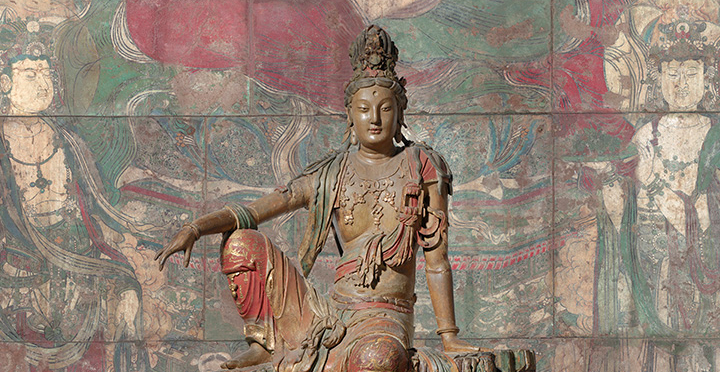July 9, 2017
Sri Lanka Sunday Times
Chandani Kirinde stands in awe of a chance discovery of a collection of Buddha statues dating from the 3rd century B.C.E. to the 21st century C.E. at a Kansas museum
Call it a serendipitous finding, but there is no better way to describe a random visit to an art museum in Kansas City in the US Midwestern state of Missouri only to discover a fascinating collection of objects related to Buddhism including statues of the Buddha, some dating back 2000 years.
At the Nelson-Atkins Museum of Art, a place which identifies itself as “a gathering place for people to share and contemplate the greatest creations of humankind”, items related to Buddhism occupy pride of place in its South and Southeast Asian art gallery.
This section houses more than 1,100 objects of South and Southeast Asian art, Himalayan art and Islamic art from West Asia and the collection represents a wide range of art forms, including sculpture, ceramics, textiles, metalwork, and works on paper that date from the 3rd century B.C.E. to the 21st century C.E.
Among the statues of the Buddha on display are those that belong to the Gandhara region (modern Pakistan and Afghanistan) as well as from India, Nepal, Tibet and China.
The earliest known Buddhist art comes from the Gandhara region. It dates back to the early centuries of the Common Era (C.E) and was greatly influenced by the Greece and Hellenistic Rome. It was from here that Buddhist art spread into Central Asia, the vast area spanning from modern Turkmenistan into Western China, and moved along the trade routes which connected China and India and the Mediterranean world.
The advent of the Gandhara art came with the spread of Buddhism in the 3rd century B.C.E, when Indian emperor Ashoka established Buddhism as his state region and sent emissaries to spread the faith across South and West Asia. In the first centuries of the Common Era, Buddhism took root in the Hellenistic settlements in Pakistan and Afghanistan in an area known as ancient Gandhara. Here, Buddhist art adopted a hybrid appearance, combining elements of Indian, Greco-Roman and Central Asian art.
Visitors to the Nelson-Atkins Museum of Art can trace the evolution of Buddhist art, starting from the Gandhara region and see how it blends with regional art forms as Buddhism spreads across the region. The well detailed panel gives a brief history of Buddhism and explains the intricate details of what constitutes a Buddha image and the different mudras (ritual and symbolic gestures) in each statue.
A Chinese temple too is recreated in the Museum, the ceiling panels and central coffered vault which comes from Zhihua temple in Beijing built in the 15th century, at the order of Wang Zhen, a powerful eunuch at the imperial Ming court. As with all traditional Chinese architecture, it is constructed entirely without nails using intricate mortise-and-tenon joinery. The panels on either side of the vault are inscribed with Buddhist mantras in Sanskriatic script.
Buddhism was known in China as early as the 1st century B.C.E; but it was not until the 4th century C.E that it began to shape Chinese society fundamentally. By then, several hundred years had passed since the death of the Buddha and Buddhism had evolved into a theologically complex religion of salvation based on faith and right conduct. As the Chinese embraced Buddhism, with it came elaborate theology and ritual practices which required images on a scale unprecedented in China. Commissioning of sacred images was among the most meritorious acts and it is some of these images that are on display at the Museum.
These Buddhist artifacts sit amidst a larger and invaluable collection of European, American, African, America Indian art and sculpture. A visit to this Museum not only enriches one’s knowledge but also leaves one humbled by the sheer magnificence of the exhibits on display and in awe of the creativity of the masters of yore.
